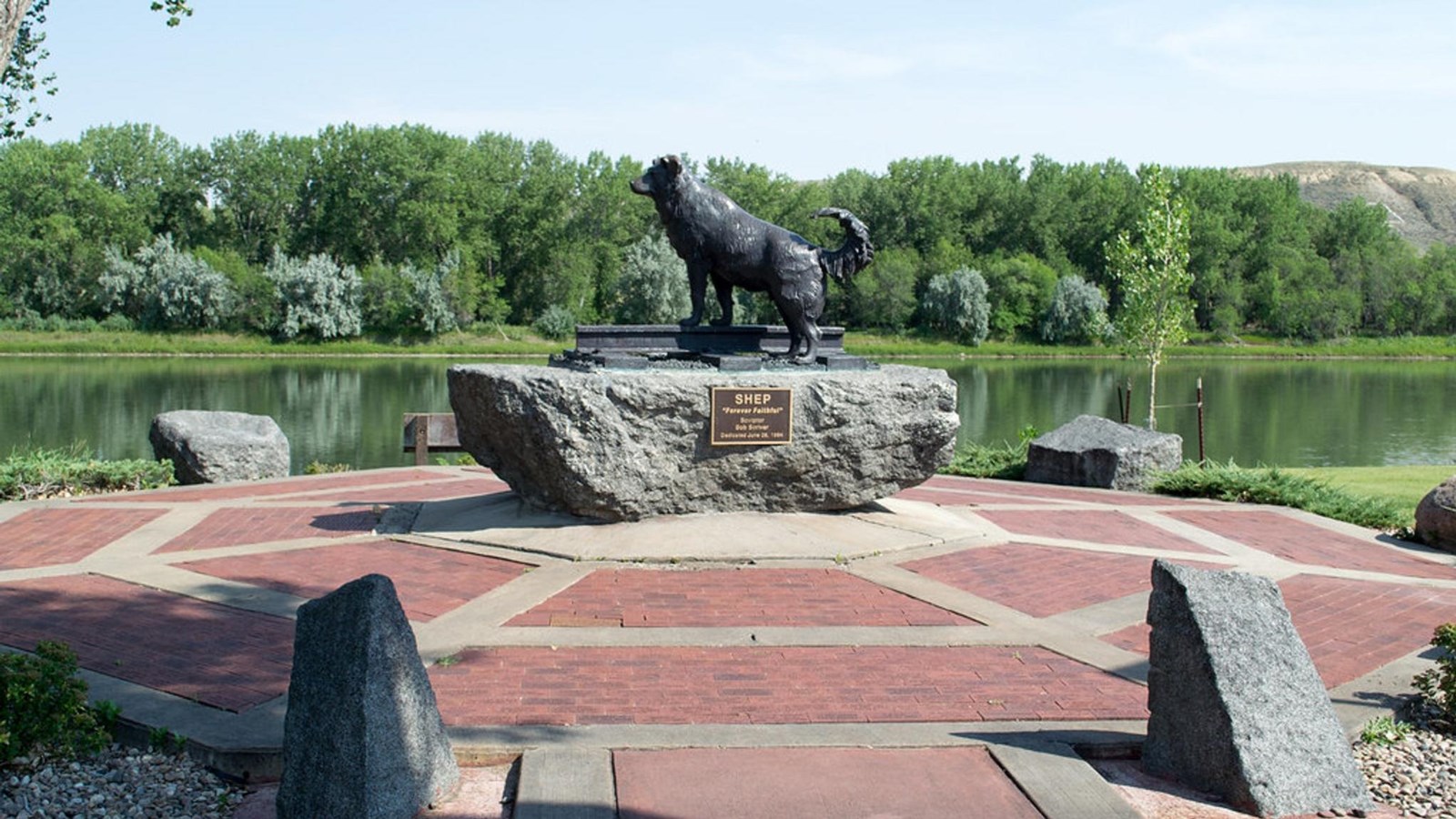Last updated: June 3, 2021
Place
Fort Benton National Historic Landmark

"Fort Benton MT monument (#0377)" by DB's travels is licensed under CC BY-NC-ND 2.0
Beach/Water Access, Benches/Seating, Cellular Signal, Food/Drink - Coffee, Food/Drink - Restaurant/Table Service, Gifts/Souvenirs/Books, Groceries/Convenience Items, Historical/Interpretive Information/Exhibits, Information, Information - Ranger/Staff Member Present, Parking - Auto, Parking - Bus/RV, Scenic View/Photo Spot, Theater/Auditorium
Lewis and Clark NHT Visitor Centers and Museums
This map shows a range of features associated with the Lewis and Clark National Historic Trail, which commemorates the 1803-1806 Lewis and Clark Expedition. The trail spans a large portion of the North American continent, from the Ohio River in Pittsburgh, Pennsylvania, to the mouth of the Columbia River in Oregon and Washington. The trail is comprised of the historic route of the Lewis and Clark Expedition, an auto tour route, high potential historic sites (shown in black), visitor centers (shown in orange), and pivotal places (shown in green). These features can be selected on the map to reveal additional information. Also shown is a base map displaying state boundaries, cities, rivers, and highways. The map conveys how a significant area of the North American continent was traversed by the Lewis and Clark Expedition and indicates the many places where visitors can learn about their journey and experience the landscape through which they traveled.
Fort Benton is recognized as a National Historic Landmark, because of the importance it played as the head of navigation on the Missouri River and the opening of the northwest and western Canada.
Established in 1846, Fort Benton is known as the “Birthplace of Montana”. An American Fur Company trading post at first, it became the hub for travel throughout the northwestern United States and Canada. Fifty steamboat a season would dock along its levee, bringing fur traders, gold seekers and settlers to the land of their dreams. Freight destined for isolated settlements would be loaded onto wagons and pulled by thousands of oxen along the trails of the northern plains.
Today, you can walk along the steamboat levee and the part of town once known as “the bloodiest block in the west”. Explore Historic Old Fort Benton, the Museum of the Upper Missouri, the Museum of the Northern Great Plains and the Upper Missouri River Breaks National Monument Interpretive Center.
